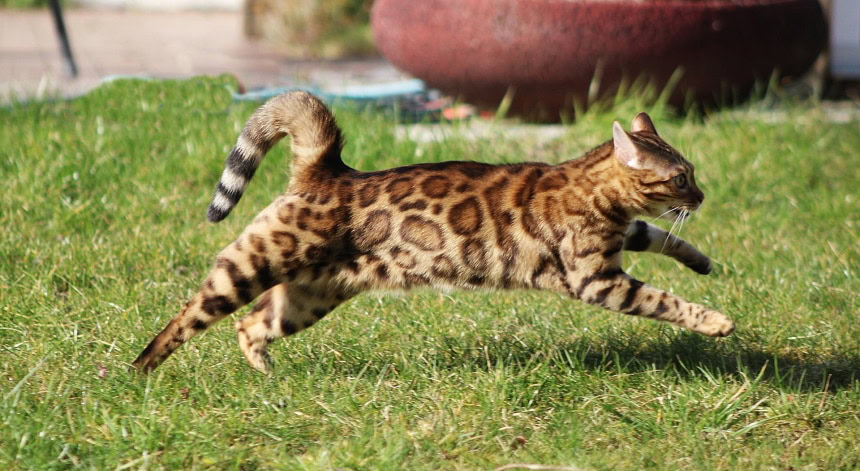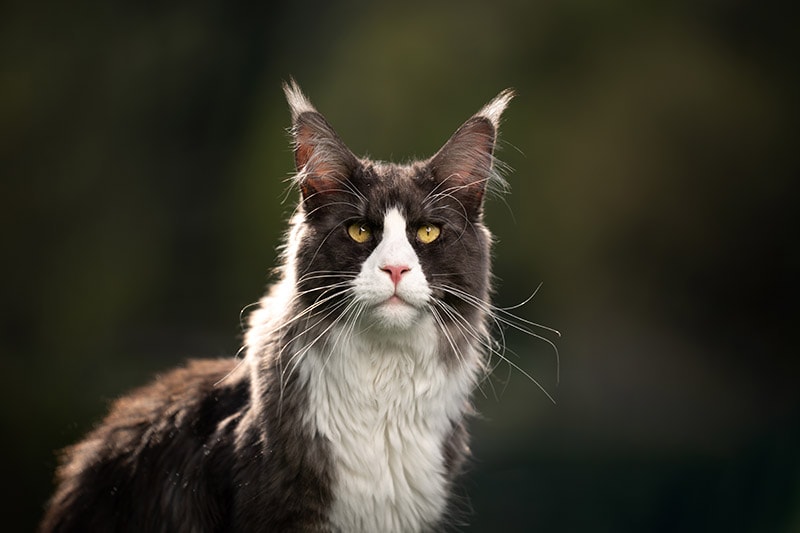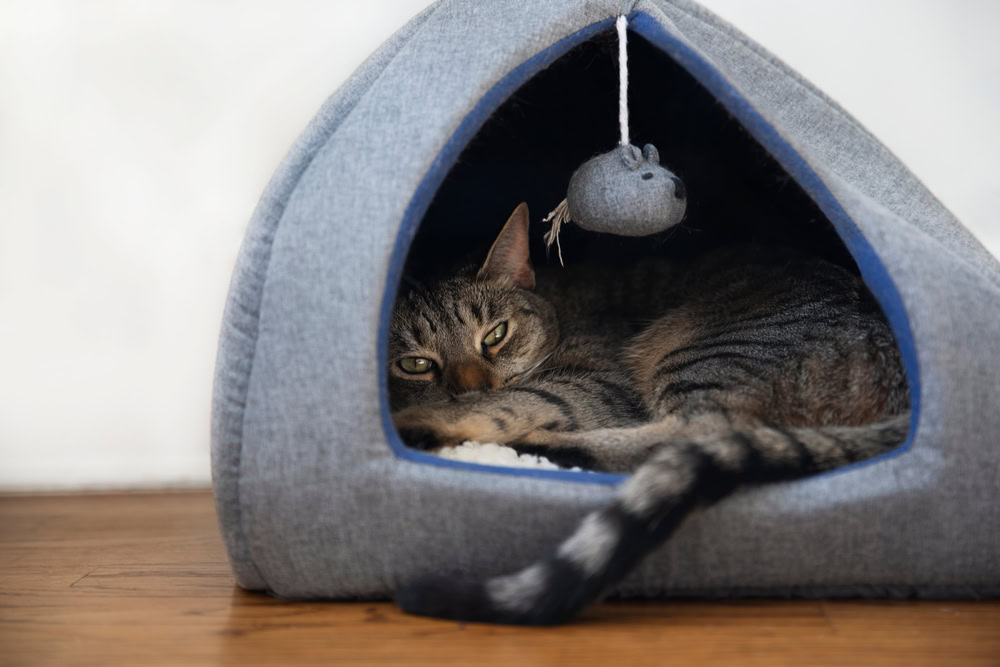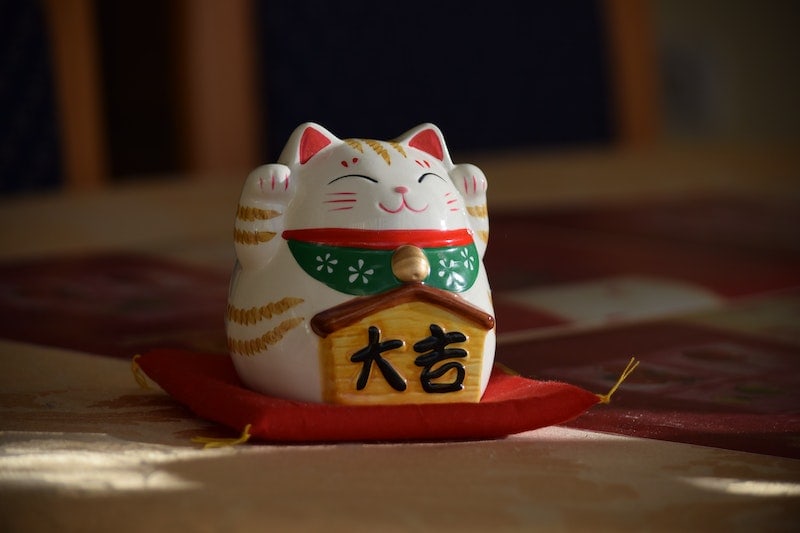Click to Skip Ahead
We’ve all seen our cats get the zoomies, which are frantic short bursts of sprinting around the house like wild felines. While they seem to be moving fast during these bursts of energy, have you ever wondered how fast cats can run?
Domestic cats can reach up to 30 miles per hour (48 kilometers per hour) when they run at full speed. That’s fast for tiny felines! We’ll discuss what makes cats so fast and why their speed is an invaluable trait.

The 4 Factors That Determine a Cat’s Speed
Domestic cats can run up to 30 mph, but their speed also depends on their age, motivation, breed, and health.
1. Age
How old a cat is will definitely be a significant factor in how fast they can run. A very young cat (or kitten) or an older cat will not be able to reach the same top speed as an adult cat in their prime. Cats are not fully mature or physically and mentally developed until they reach about 1 to 2 years of age. Once they are over 4 years old, their running speed will start to decline. Cats between about 2 and 4 years of age are at their physical peak, and this is around the time that they can reach top speed.
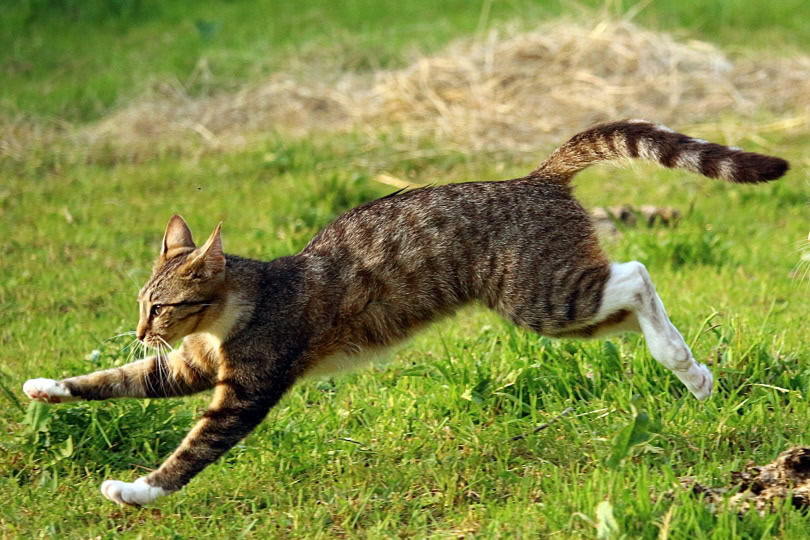
2. Motivation
Motivation mainly affects stray and feral cats as a means of survival. Running away from danger and chasing down prey motivates a cat to run fast. House cats have the same instincts, and they use play sessions with their owners to show off their speed.
3. Breed
Some breeds are more athletic and have streamlined physiques and are, therefore, much more likely to be faster than other breeds.
The faster breeds include:
In fact, the Egyptian Mau is listed in the Guinness World Records as the fastest breed.
The slower cats are larger and heavier or have flatter faces, which can lead to brachycephalic issues. If the cat has breathing problems, they can’t run as fast.
The slower breeds include:
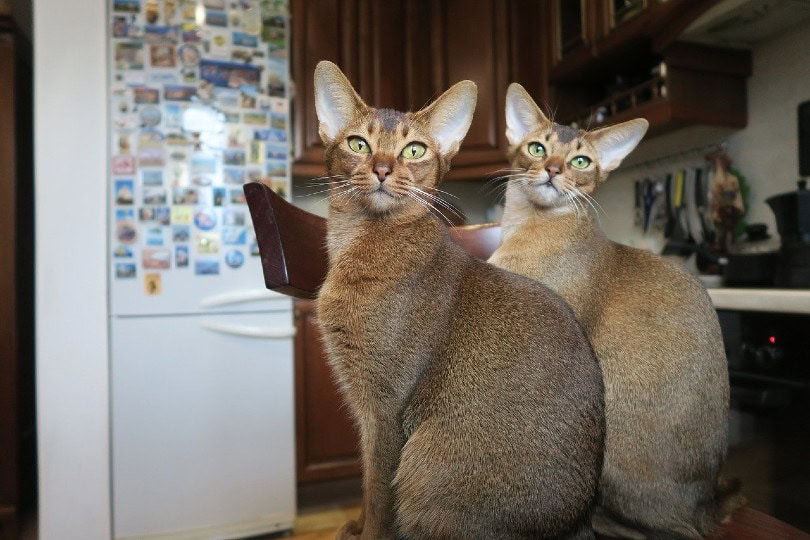
4. Health
The healthier the cat, the faster they can run. A cat suffering from a health condition or is injured won’t be able to run that quickly. Similarly, a chunkier cat won’t be able to run as fast as a slimmer cat.
Cats are pretty good at hiding injuries and illnesses, so if your cat is acting out of sorts and no longer getting the zoomies, make an appointment with your veterinarian.

Wild Cats vs. Domestic Cats
We know how fast domestic cats are, but how do they compare to their larger and wilder cousins?
| Cat | Running Speed (mph) |
| Cheetah | 75 |
| Lion | 50 |
| Mountain Lion | 50 |
| Snow Leopard | 40 |
| Jaguar | 37 |
| Bobcat | 30 |
| Domestic Cat | 30 |
| Sand Cat | 25 |
| Tiger | 24 |
Look at that! Our little felines can outrun a tiger!
What Makes Our Cats So Fast?
The cat’s body is aerodynamic, particularly the fastest cats, which makes them more resistant to the drag of the air around them as they run. Cats are also digitigrade, which essentially means that they walk and run on their toes (as opposed to humans, who walk on their feet, also known as plantigrade locomotion).
Digitigrade animals have the advantage of being able to react faster. The back legs of cats are also muscular and powerful, propelling them to much faster speeds while they run. If you watch your cat walking, you’ll notice that the left hind leg is followed by the left front leg, and the right hind leg is followed by the right front leg.
When running, the hind legs are used together, followed by the front legs, which gives them so much power to run. Lastly, the cat’s spine is flexible and can compress, which gives it an almost spring-like action. If you watch a cat running in slow motion, you’ll notice that the entire body bunches up and stretches out, which gives it speed, and the spine moves with it.

The 4 Reasons Your Cat Gets Zoomies
It’s not likely that your cat can reach top speed while running inside, but if you have a particularly long hallway, they may seem like they can outrun a cheetah!
You probably already know why cats suddenly start racing around the house: they are either releasing pent-up energy or simply exhilarating themselves.
1. Pent-Up Energy
It can happen more often with indoor cats because they don’t have the same opportunities for hunting or playing as their wild counterparts. Since house cats are predators but also domestic and don’t need to hunt for survival, some of that energy can build up until your cat feels the need to release it.
The more often your cat seems to race around, the more likely you need to spend extra time playing with them.
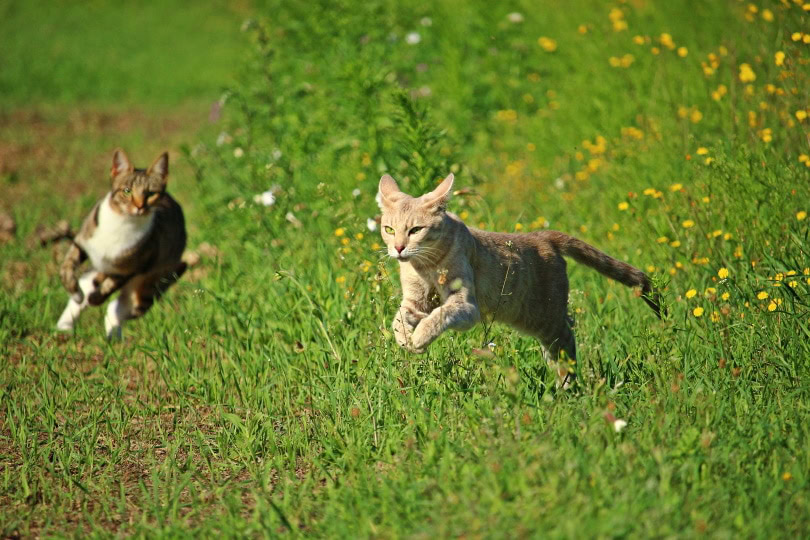
2. Excitement
If your cat seems to race around shortly after you get home or get out of bed, it may be the pent-up energy bursting out due to good old-fashioned excitement!
3. Health
Some cats might be dealing with stress or anxiety, or they might have an uncomfortable health issue. Fleas, allergies, hyperthyroidism, and feline hyperesthesia syndrome (also known as twitch-skin syndrome) can all cause sudden bursts of speed.
If your cat seems to be scratching and licking frequently and their skin is twitching, it might be a health problem, so a visit to your vet is in order.

4. Litter Box
How often have you noticed your cat zooming around after a visit to the litter box? There are several theories as to why, but if your cat doesn’t have issues with pooping and the litter box is clean, it might be a bit of euphoria.
There’s a nerve (called the vagus nerve) that runs from the brain down to the anus and stimulates feelings of euphoria after defecation. Essentially, your cat is just happy after pooping. However, be aware of how your cat is acting. Speak to a vet if you suspect the running is from pain or illness.

Final Thoughts
The cat’s breed, age, health, and motivation affect its running speed. The more athletic and svelte the cat, the faster they will be, and 30 mph is pretty impressive! While our cats might be super-fast, they are sprinters and don’t have the endurance to run at top speeds for long stretches.
Their bodies and instincts are built for speed, and a cat in motion is a beautiful sight.
Also read:
Featured Image Credit: Jeannette1980, Pixabay
